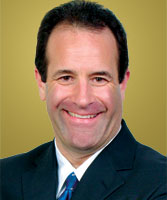 By Jim Peduto By Jim Peduto
Jim Peduto is the president of Matrix Integrated Facility Management and the co-founder of the American Institute for Cleaning Sciences, an independent third-party accreditation organization that establishes standards to improve the professional performance of the cleaning industry. |
A closet full of slow-moving or obsolete products and equipment poses many concerns to building service contractors and their employees. Cash tied up in idle inventory creates not only a negative impact on the company’s profitability, but safety concerns for employees as well.
With a standardized purchasing program, BSCs can have a better-managed product inventory, better service from suppliers, a simplified training program and easier-to-manage compliance program. Building an effective purchasing program can be done in three steps:
1. Evaluate products and equipment: First, determine which products and equipment perform well and which ones do not. Start by reviewing purchasing records and come up with a current inventory of all products and equipment. Conduct a walkthrough survey to validate your initial findings. Make note of product/equipment cost, manufacturer, and/or vendor information, MSDS, where the product/equipment is used, and its application and its frequency. Identify any products or equipment that have been linked to worker injuries and/or staff or customer complaints — you will eliminate these later.
Conduct and document performance evaluations. Ask: Does the product perform the same function as another in the inventory? Does it perform well?
2. Standardize product and equipment selections: Product and equipment evaluations will help you make a short list of what works best for your business. Edit this list to include only the products and equipment that perform well and are necessary to the work. This list will be your “approved” equipment and supply list.
Evaluate your inventory to ensure that it is consistent with your approved list. By using only approved products and equipment, you should see a significant reduction in storage space, fewer MSDSs and labels to manage, and better and more consistent product performance. Employee training programs should reflect the standardization and become simpler and more streamlined as a result.
This standardization process provides the opportunity to evaluate product suppliers as well, especially if you have multiple vendors or are unsatisfied with a current supplier. Keep in mind that distributors prefer to make large deliveries. By consolidating your purchases with fewer suppliers you are a more attractive and valuable customer. Remember better customers usually get better pricing.
3. Implement inventory management systems: Selecting the right products and equipment is important but even more crucial is ensuring there is enough, but not too much, on your shelves.
Manage inventory better by evaluating order history and inventory control sheets. Inventory management and supply control systems, whether provided through your supplier or an in-house system, can also help you keep the right amount of cleaning chemicals and supplies in stock.

 The Down and Dirty on Cleaning in Virus Season
The Down and Dirty on Cleaning in Virus Season How Surfactant Use is Expanding in Commercial Cleaning
How Surfactant Use is Expanding in Commercial Cleaning Maximize Your Margins: Learn How to Automate Pricing and Track Rebates
Maximize Your Margins: Learn How to Automate Pricing and Track Rebates